
One of the topics up for discussion this week at Davos is unusual for the World Economic Forum. The issue of gay and lesbian rights for the first time is on the formal agenda. The WEF usually confines itself to the rich, famous and the bottom line. But this week LGBT issues have finally made it.
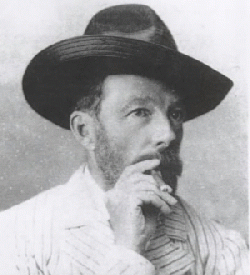
John Addington Symonds
Davos owes its origin as a spa town to the district physician Dr. Spengler. He noticed that returning emigrants with pulmonary complaints quickly recovered in the mountain air. Soon patients arrived from all over Europe, as the scourge of tuberculosis racked and coughed through the nineteenth century. The English writer John Addington Symonds arrived in 1867 and spent his winters in the high Alpine air until his death in Rome in 1893.
Symonds was an art historian and man of letters. But it is as one of the first advocates of homosexual liberation that he is now remembered. I hope his contribution to LGBT history will be acknowledged in his home town among the sharp tailoring and sound of money this week.
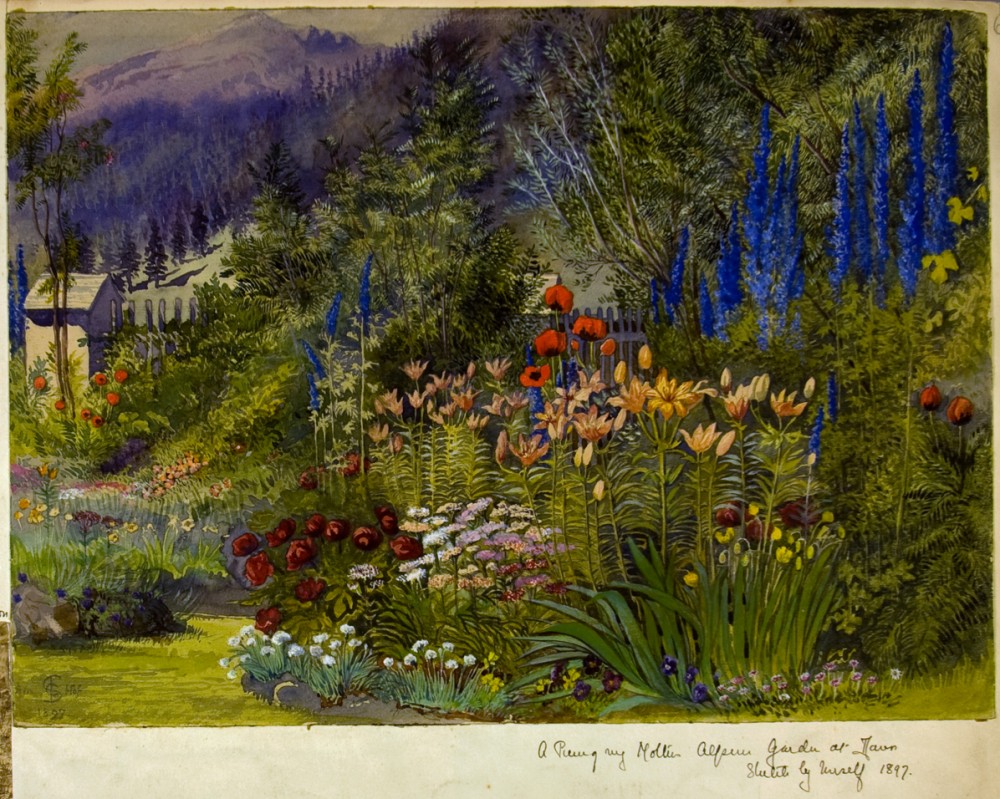
Watercolour of the garden, Am Hof, Davos, by Catherine Symonds, 1897. Library of University of Bristol
He lived in Davos with his wife Catherine and their three daughters. The Symonds family formed the nucleus of English and literary society in this narrow mountain valley.
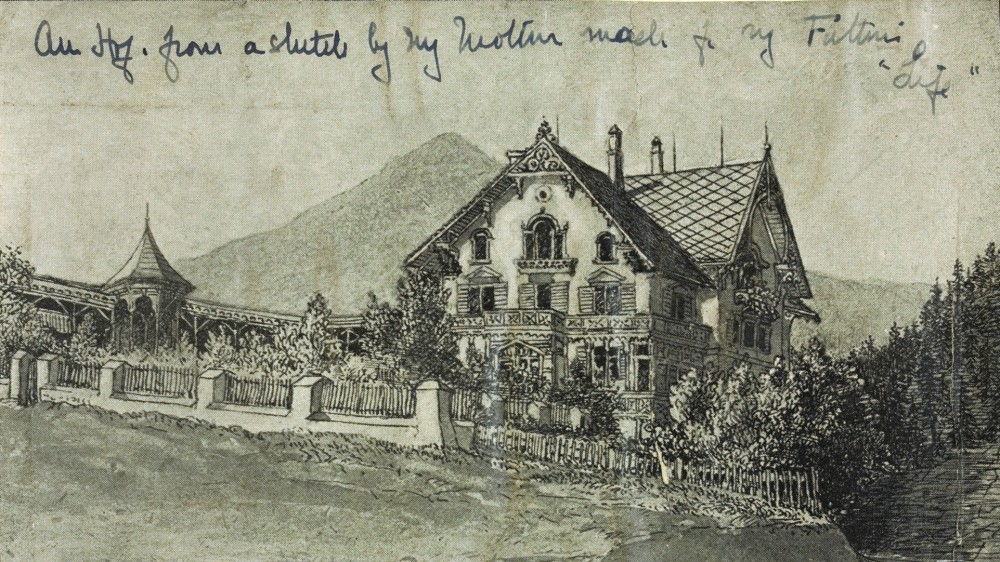
Sketch of Am Hof, Davos, by Catherine Symonds. Library of Bristol University.
Am Hof, their Davos house and garden with wonderful hollyhocks, has been preserved in Catherine’s sketches and watercolours, now in the archives of Bristol University. Catherine was aware of her husband’s roving eye for mountain menfolk, Venetian gondoliers and porters.
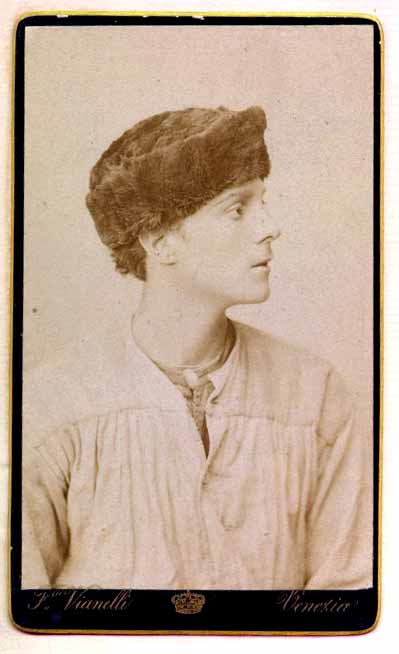
Augusto Zanon, 20, Symond’s Venetian porter, 1890.
Symonds’ Italian Byways (1883) includes a fair bit of high-flown art appreciation. It is dedicated to Christian Buol and Christian Palmy, “my friends and fellow-travellers”. These were two Davosers Symonds took up with, crossing the Bernina Pass to the Valtelline (Veltiner) wine country on the slopes of the Adda river valley in Lombardy. Fine essays on wine, “Bacchus in Graubunden” and “Winter Nights at Davos,” bear up well as journalism goes. In Our Life in the Swiss Highlands (1892) he waxes lyrical about Swiss gymnasts:
Bruisers like Milo of Croton, brawny, thick-set men, of bone and muscle, able to fell oxen with a fist-blow on the forehead. Most people think the Swiss an ugly, ill-developed race. They have not travelled with 600 of these men on a summer day, as lightly, tightly clad as decency and comfort allow. It is true that one rarely sees a perfectly handsome face, and that the Swiss complexion is apt to be muddy. But the men are never deficient in character;
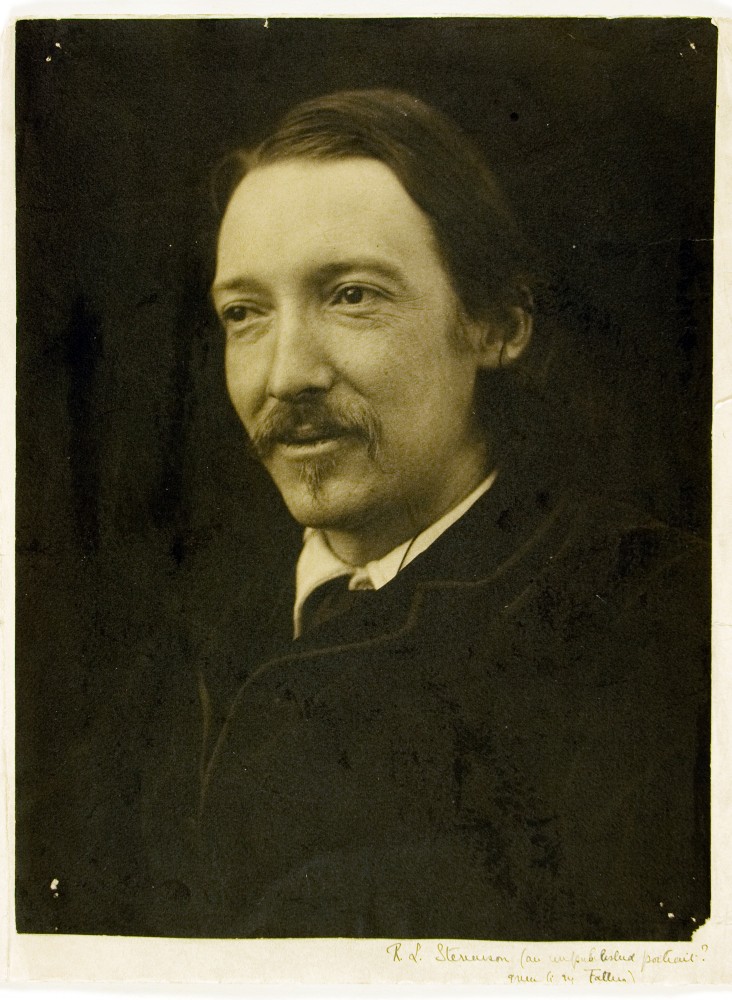
Robert Louis Stevenson. Library of Bristol University.
Robert Louis Stevenson stayed in Davos over two successive winters, 1881 and 1882. He was there with his wife and stepson, Samuel Lloyd Osbourne, age 12, who brought with him a small portable printing press now on display at the Writers’ Museum in Edinburgh. The press, a gift from Stevenson, had travelled from San Francisco to Silverado, to Edinburgh and Davos. It was used in Davos to print the programme for the weekly concerts at the Hotel Belvedere where the Stevensons were staying.
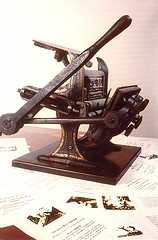
The Davos Press, exhibited at The Writers’ Museum, Edinburgh
The author of Treasure Island had a great affinity with children. “He brought a boy’s eagerness, a man’s intellect, a novelist’s imagination into the varied business of my holiday hours; the printing press, the toy theatre, the tin soldiers all engaged his attention,” wrote Lloyd many years later. Lloyd’s ex libris was designed by Stevenson.
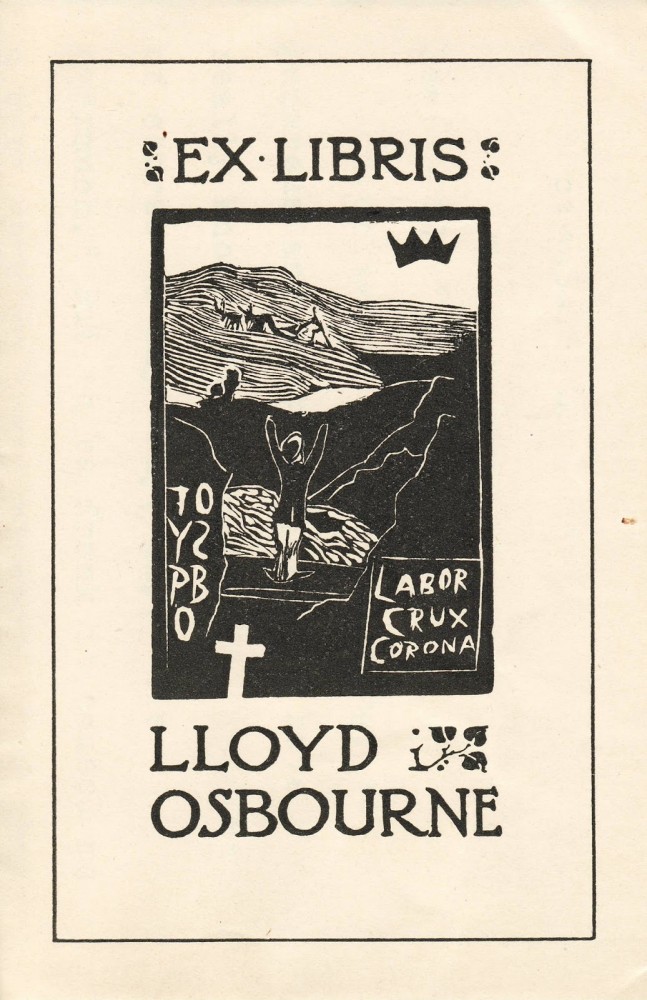
Ex libris of Lloyd Osbourne, designed by Robert Louis Stevenson
Medical treatment at Davos had a New Age quality, consisting of sitting all day long for three weeks on a gravel terrace of the Hotel Belvedere. Following this attractive rest cure, Symonds was slung in a hammock in the woods.
My manservant took me up in a little carriage, hung a hammock between two pine trees, carried and placed me in the hammock, and when the sun came near to setting fetched me again in the carriage.
Soon Symonds was eyeing up the Tyrolese peasantry as it took a quick pee in a meadow.
He had probably taken too much wine, and there was licence in his gait. Desire for the Bursch [youth] shot through me with a sudden stab. I followed him with my eyes until he passed behind a haystall; and I thought – if only I could follow him, and catch him there, and pass the afternoon with him upon the sweet new hay! Then I turned to my Campanella’s sonnets, and told myself that these things were forever over.
The Buol boys and Symonds were also instrumental in establishing an English church in Davos, which opened its doors on January 28, 1882. He funded most of the cost of the Davos Gymnasium, founded the Davos Gymnastic Club, and hosted wine parties for its members. Very much the committee man. I think he would fit right in with the Economic Forum chappies.

Pyotr Ilyich Tchaikovsky
The composer Tchaikovsky was another gay visitor. He came to Davos to see his former student and lover, Iosef Kotek, in November 1884. Soso Kotik (‘Joe the Tomcat’) was Tchaikovsky’s nickname for him. They had met when Tchaikovsky was teaching composition at the Moscow Conservatory. Kotik, a violinist, was the source of inspiration for Violin Concerto in D, composed at Nadezhda von Meck’s estate at Clarens in Switzerland. Kotek died in Davos in January 1885, aged twenty-nine.
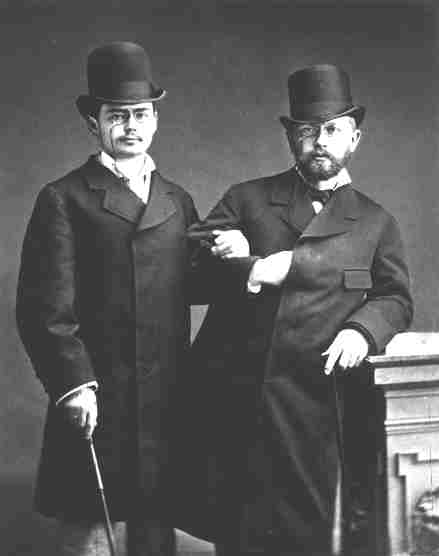
Two gay old blades: Iosef Kotek (‘Joe the Tomcat’) and Pyotr Ilyich Tchaikovsky
Both Symonds and Tchaikovsky married in attempts to cover their homosexual tracks or to bring about a cure. Both carried on liaisons with men behind their wives’ backs, and expressed their true selves through music and writing.
But it was the German novelist Thomas Mann who made the most sustained use of Davos and its mountain amphitheatre. His long novel, The Magic Mountain, explores an invalid’s engagement with illness on the eve of the First World War. In 1911-12 he wrote what is perhaps the seminal gay love story of the twentieth century, Death in Venice. Mann had always had a soft spot for a sailor suit.
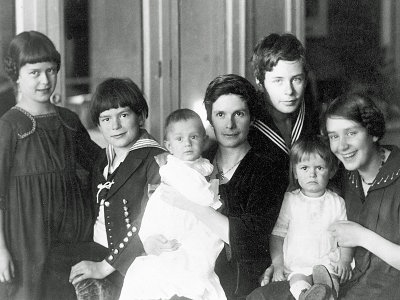
Katia Mann and the six nippers in 1919. Thomas must be off writing The Magic Mountain
He was yet another of those old-style married homosexuals, with their Hellenic baggage, a clatter of children and a patient wife – proof perhaps of the ascendancy of hydraulics over chemistry. In 1912, towards the end of the writing of Death in Venice, Mann journeyed to Davos for three weeks to visit his wife, flush with the knowledge that he had just written a small masterpiece and feverish with his own demons.
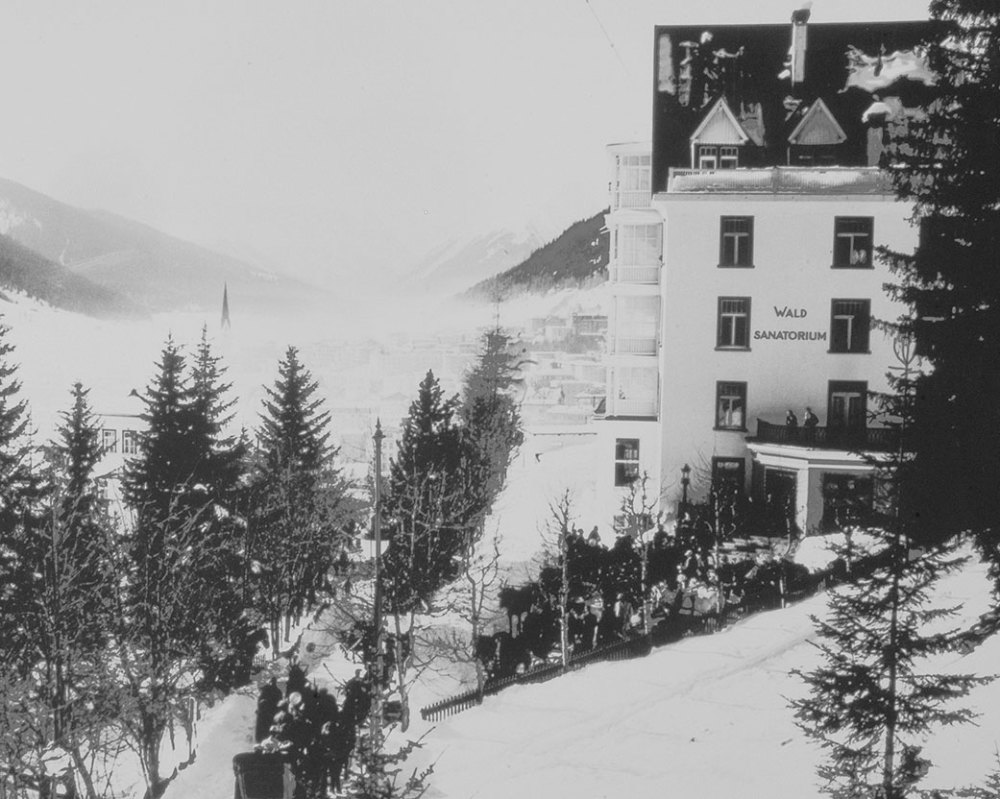
Waldsanatorium in Davos
Katia Mann was staying at the Waldsanatorium. A curious fact about her six-month stay emerges from her x-rays, which have been preserved. They do not present any evidence of tuberculosis, according to present-day experts. Perhaps she just needed a rest.
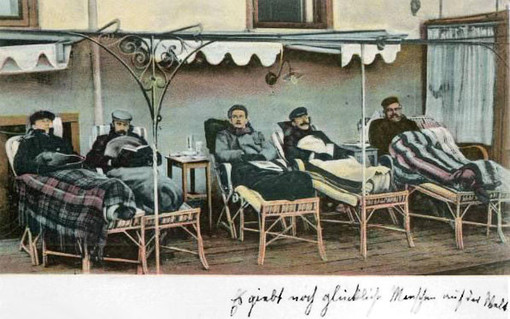
Tuberculosis patients at Davos
The Magic Mountain could be read as a bible of the spa class, where healing, money, splurge and purge meet. Spa people are not great readers, however, and The Magic Mountain is an uphill slog. The rich like to render their illnesses as exclusive, and Davos found ways of catering to them over the years – first the tubercular Russians, then the Germans, now the Russians again, the international economic tsars and their slush fund babes.
Mann’s pinched face with close-set eyes and bristly moustache stares out at us, not un-handsome but not forthcoming either. He had a Prince Charles way of handling a pocket, always anxious to look the picture of probity.
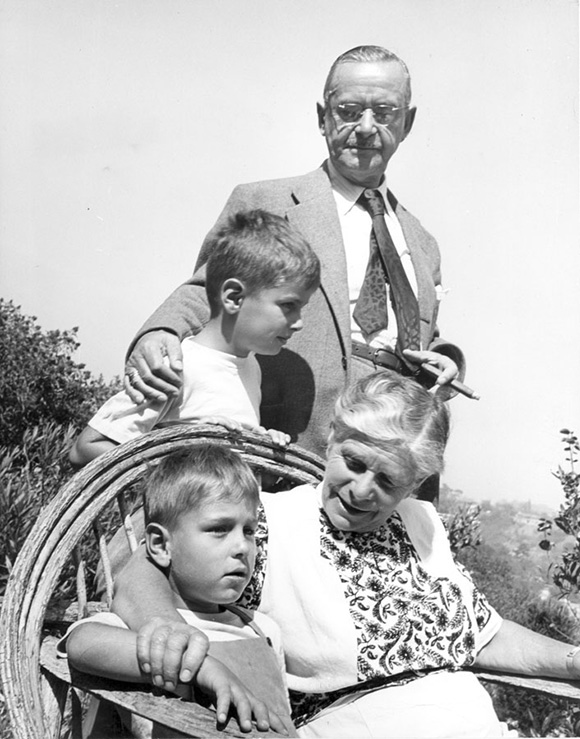
Thomas and Katia Mann with their grandchildren
The Magic Mountain has what I think is the first literary description of sledding:
Steered by men and women in white wool and with sashes in various national colors across their chests, the low, flat frames came shooting down, one by one, at long intervals, taking the curves of the course that glistened like metal between icy mounds of snow. You could see red, tense faces with snow blowing in their eyes. There were accidents, too – sleds crashed and upended, dumping their teams in the snow, while onlookers took lots of pictures.

Towards the end of The Magic Mountain the main characters pay a visit to the village cemetery in Davos, where the tubercular dead are buried.
– on the whole these life spans had been strikingly short, the difference in years between birth and demise averaging little more than twenty. The field was populated exclusively by youth rather than virtue, by unsettled folk who had found their way here from all over the world and had returned now for good and all to the horizontal form of existence.
When the delegates this week at the World Economic Forum sit down to discuss LGBT issues, perhaps they might pause for a moment to recall the nellies, pansies, poofs, nancy boys and assorted fairies who came here before them, many of whom are six feet under the snow in that “horizontal form of existence”.


4 thoughts on “A Gay Old Time in Davos”